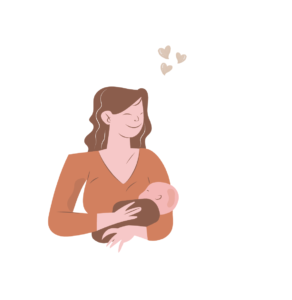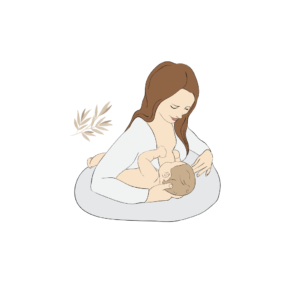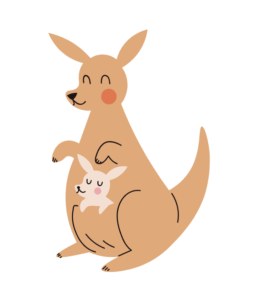Holding your newborn baby is a precious and intimate experience. As a new parent, it’s natural to want to ensure the safety and comfort of your little one. But How to Hold a Baby? what is the best position, the best method? what if I want to keep my hands free?
In this article, we will explore the different holding positions recommended by experts and provide you with valuable insights to make those special moments even more enjoyable. Additionally, we will review the options available to keep your hands free when carrying your baby. Whether you’re looking for bonding, soothing or simply seeking the optimal position for your baby’s well-being, we’ve got you covered.
Positions for holding your baby
 Cradle Hold:
Cradle Hold:
The cradle hold is a classic and popular position for holding newborns. Supporting your baby’s head in the crook of your arm and cradling them with your other arm, this position provides a secure and comforting embrace.
 Football Hold:
Football Hold:
The football hold, also known as the clutch hold, is particularly useful for breastfeeding mothers. In this position, you tuck your baby under your arm, with their head near your breast and their legs pointing behind you. It allows easy access for breastfeeding and offers good head and neck support. Keywords like “football hold for breastfeeding” and “best holding position for breastfeeding mothers” can be utilised to improve SEO.
If you want to know more about breastfeeding, check out this article.
 Shoulder Hold:
Shoulder Hold:
The shoulder hold is an excellent choice for calming a fussy baby. In this position, you place your baby upright against your shoulder, supporting their head and neck with one hand while gently patting their back with the other. Incorporate keywords such as “soothing baby holding position” and “how to calm a fussy newborn” to target specific search queries.
 Kangaroo Care:
Kangaroo Care:
Kangaroo care, also called skin-to-skin contact, is a wonderful technique that promotes bonding and regulates your baby’s body temperature and heart rate. You place your baby directly against your bare chest, allowing for maximum skin-to-skin contact. Use keywords like “kangaroo care benefits” and “skin-to-skin holding position” to enhance the article’s visibility.
Choosing the best position to hold your baby depends on various factors, including their age, feeding needs and personal preferences. By familiarising yourself with different holding positions like the cradle hold, football hold, shoulder hold and kangaroo care, you can ensure a safe, comfortable and enjoyable experience for both you and your baby. Remember, each baby is unique so it’s essential to find the position that works best for you and your little one.
Hands-free alternatives
Now, we know that we can’t carry our babies with us all the time and that it is essential to have our hands free for daily tasks. That is why baby carriers and wraps provide a practical and comfortable solution, allowing you to carry your little one while promoting bonding and offering convenience.
Whether you’re seeking a hands-free approach or looking to enhance the bond with your baby, these versatile options have got you covered.
Baby Carriers:
Baby carriers are structured devices designed to hold your baby securely against your body. They offer numerous benefits, including:
- Bonding: Baby carriers provide the opportunity for intimate bonding, allowing you to be physically close to your baby while attending to other activities.
- Convenience: With a baby carrier, you can have your hands free making it easier to complete daily tasks or navigate crowded spaces.
- Ergonomics: Well-designed carriers provide proper support for your baby’s spine, hips and neck, promoting healthy development.
- Mobility: Baby carriers offer a convenient solution for parents who enjoy outdoor activities or need to navigate uneven terrains.
Baby Wraps:
Baby wraps consist of long pieces of fabric that are wrapped around you and your baby to create a secure and snug hold. They offer several advantages, such as:
- Customised Fit: Baby wraps can be adjusted to your and your baby’s size and shape, providing a personalised and comfortable fit.
- Versatility: With a baby wrap, you can experiment with different carrying positions to find the one that suits you and your baby best.
- Newborn Support: Wraps offer excellent support for newborns, replicating the feeling of being in the womb and providing a soothing environment.
- Breastfeeding Accessibility: Wraps allow discreet breastfeeding while keeping your baby snugly held against you.
Benefits of Baby-wearing
By using baby carriers or wraps, parents can enjoy a range of benefits, including:
- Enhanced Bonding: The close physical contact fosters a strong emotional bond between parent and baby.
- Calming Effect: The gentle motion and proximity to the caregiver can soothe fussy or colicky babies.
- Cognitive Stimulation: Babies held in carriers have more opportunities for interaction and learning from their environment.
- Hands-Free Parenting: Baby-wearing allows parents to attend to household chores, run errands or care for older siblings while keeping the baby close.
Baby carriers and wraps provide new parents with a practical and nurturing way to keep their babies close while enjoying the benefits of hands-free mobility. The use of carriers and wraps enhances bonding, provides convenience, promotes healthy development and allows for engaging experiences for both parent and baby. Whether you opt for a structured carrier or a versatile wrap, baby-wearing can be a valuable addition to your parenting journey, providing comfort, closeness and a meaningful connection with your little one.
Whether you embrace one of these holding positions, or you use a carrier or wrap to keep your hands free, you will be nurturing your baby with both physical and emotional support, creating a unique connection between you and your baby. So go ahead, try different positions and savour these beautiful moments of parenthood.
Always remember to consult your health provider with any questions you may have about your baby. Check out this NHS guide if you have further questions.




Very complete article, easy and friendly to read. Being a new parents is hard and all the information is useful and precious, I’ll send it to my husband, holding our new born it is his biggest challenge